You’re walking through the woods at dawn when you see a cat-sized creature shuffling along. As it passes, you are struck by the thick, naked tail, the pointed snout, coarse fur and weirdly long fingers. An opossum.
It’s a familiar and common creature in many parts of North America. Some find them creepy. Some find them cute. But when you see one up close, you can’t help but be struck by just how utterly bizarre it is. It has a prehensile tail. It has a thumb. It doesn’t look like anything else you see in field or forest.
And there is truth to this perception. There are more than 110 species of opossums ranging across Central and South America (not to be confused with possums, an Australian order of mammals that aren’t closely related). But the Virginia opossum (Didelphis virginiana) is the only marsupial found north of Mexico.
As you might expect of such a peculiar-looking animal, the Virginia opossum is the subject of its fair share of folklore and myth. But there’s no need to embellish the opossum: it is a fascinating, adaptable creature that has found a way to live alongside humanity.
Enjoy these opossum facts. And, as always, leave your own opossum observations in the comments.
-
Playing Possum
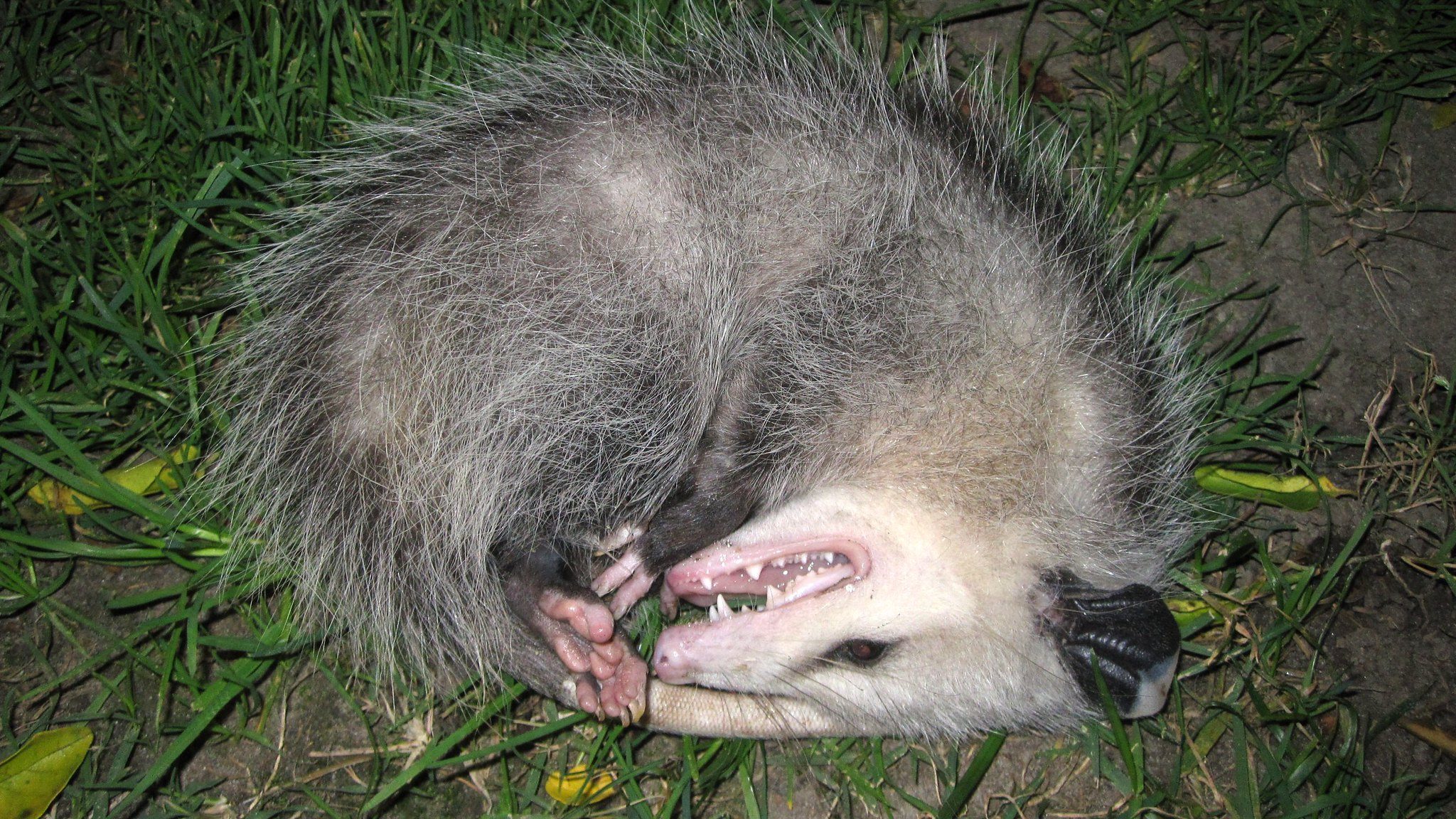
Virginia opossum playing dead © Tony Alter/ Flickr One of the most commonly known habits of opossums is “playing dead” or, as it is frequently called, “playing possum.” This is real, although the opossum is not playing, which suggests there is some intent at work.
An opossum, when confronted with a threat, will often hiss or bare its teeth. Or more likely, run. But if it is surprised by a predator, it will enter a catatonic state. It basically faints and is in a state of unconsciousness. The opossum has no control over this; it’s involuntary.
It does indeed appear if the opossum is dead. Its teeth are visible, as if in a death grimace. It emits a foul substance from its anus, the smell described as corpse-like.
A predator is confronted with what appears to be dead, unhealthy prey, and may leave the opossum alone.
This death-feigning strategy, as some sources note, is not without its risks. The opossum is unconscious. So if the predator decides to gnaw on the opossum anyway, there’s no escape. It is also commonly cited as a reason why you see so many road-killed opossums, but I found a lack of research support for this.
The opossum will remain in this unconscious state for minutes to hours.
-
The Nostril-Birther Myth
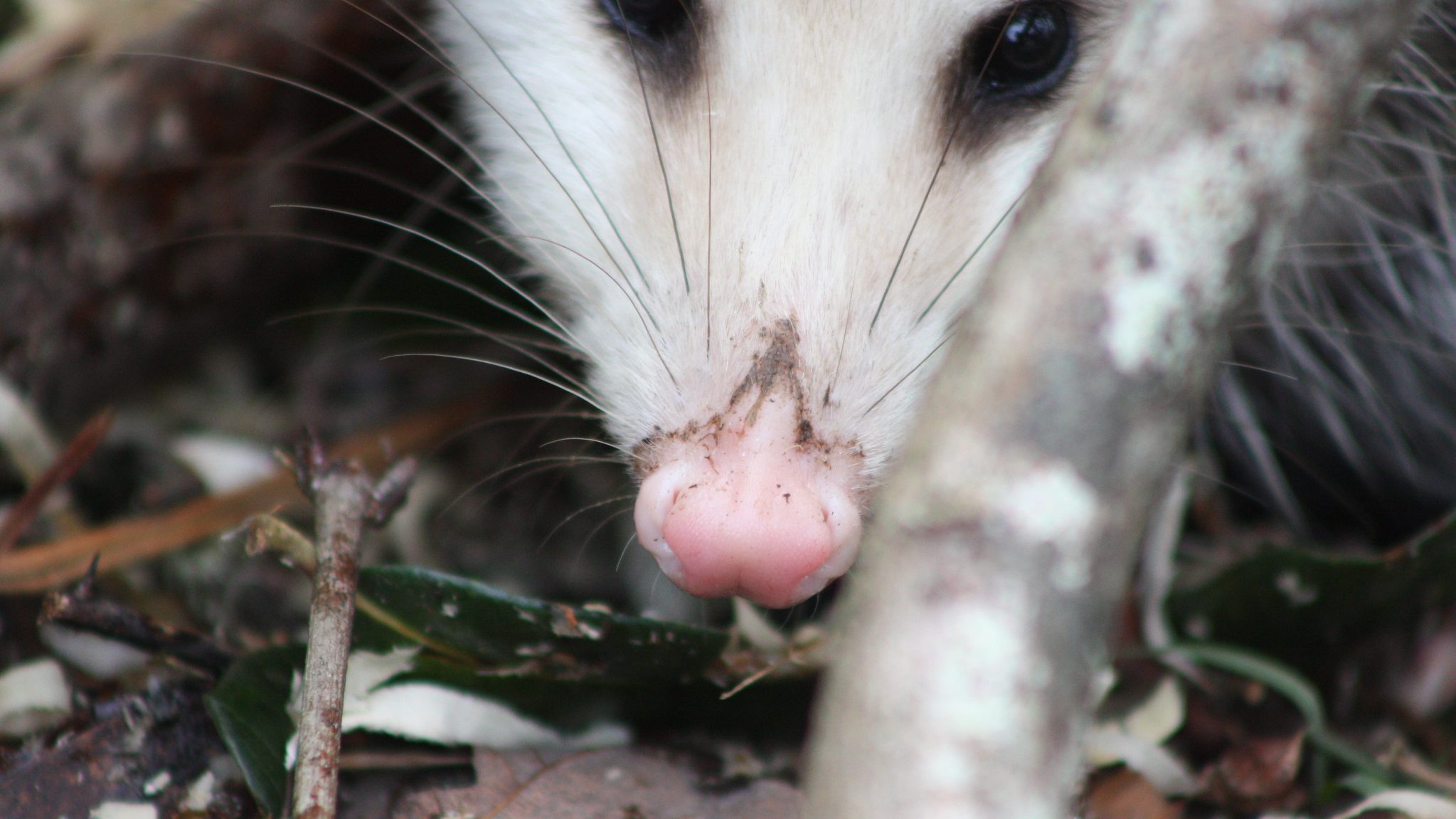
Virginia opossum nose (this is not where baby Virginia opossums come from) photo © VA State Parks Staff/Flickr It’s probably unsurprising that an animal that transforms itself into a smelly corpse is going to be the subject of folk tales. One of the wackiest myths is the once-common view that female opossums give birth out their nostrils. There’s no fake news like wildlife-related fake news.
Female opossums often lick their pouch and surrounding areas before giving birth, sometimes making a sneezing sound when they do. Observers apparently then peered into the pouch, saw newly born young possums and made the considerable mental leap that the female opossum had sneezed out the babies.
A further narrative component to this tale is that male opossums have a two-pronged penis (which is true of opossums and many other marsupials). Backwoods wisdom claimed this organ fit perfectly into the female’s nostrils, but please don’t contemplate how someone reached this conclusion.
No, opossums don’t sneeze out their young, but real opossum birth is plenty weird in its own right.
-
It’s Tough to Be a Walking Embryo
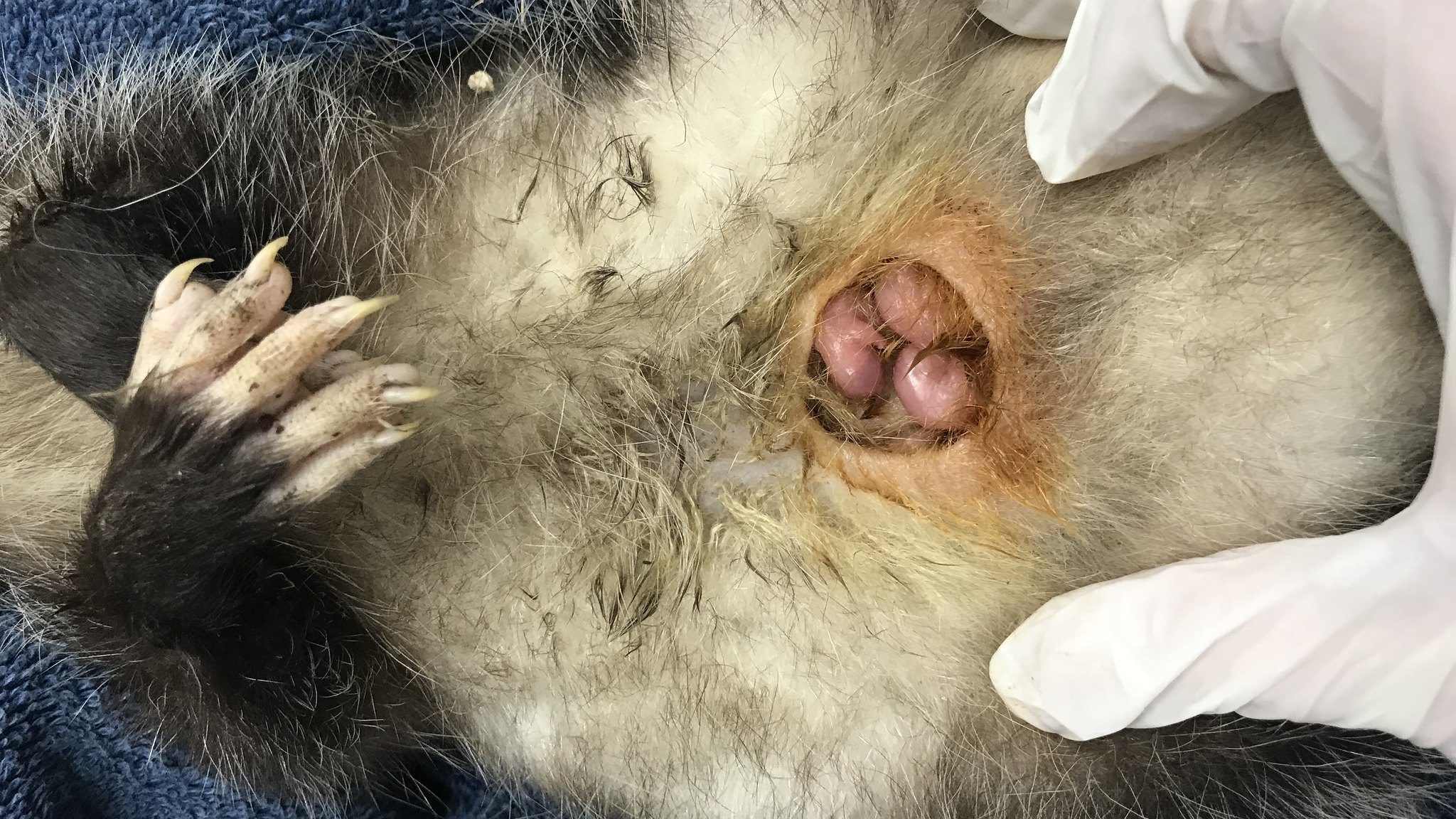
Virginia opossum pouch full of babies © Hobbitstee Wildlife Refuge /Flickr Baby Virginia opossums are born hairless and sightless and are about the size of a honeybee. They are essentially, as nature writer Ted Williams notes, walking embryos. Immediately upon birth, they have to use their small but strong front legs to clamber into the pouch.
The mother opossum licks the pouch and other fur (see above) to help the baby opossums in their journey. Many still do not make it. Once in the pouch, life gets no easier. An opossum litter may consist of 25 young, but a female has only 13 nipples, not all of which may provide milk. If the opossum doesn’t fasten to a functioning nipple, it dies.
The lucky survivors stay attached for 50 to 70 days (however, they are not fused to the nipple, another common myth). After this, they may stay in the mother’s den or ride around on her back. After approximately 120 days, they depart to live the life of a solitary opossum, a transition that 60 percent do not survive.
It’s not easy to be a baby opossum.
-
Northern Exposure
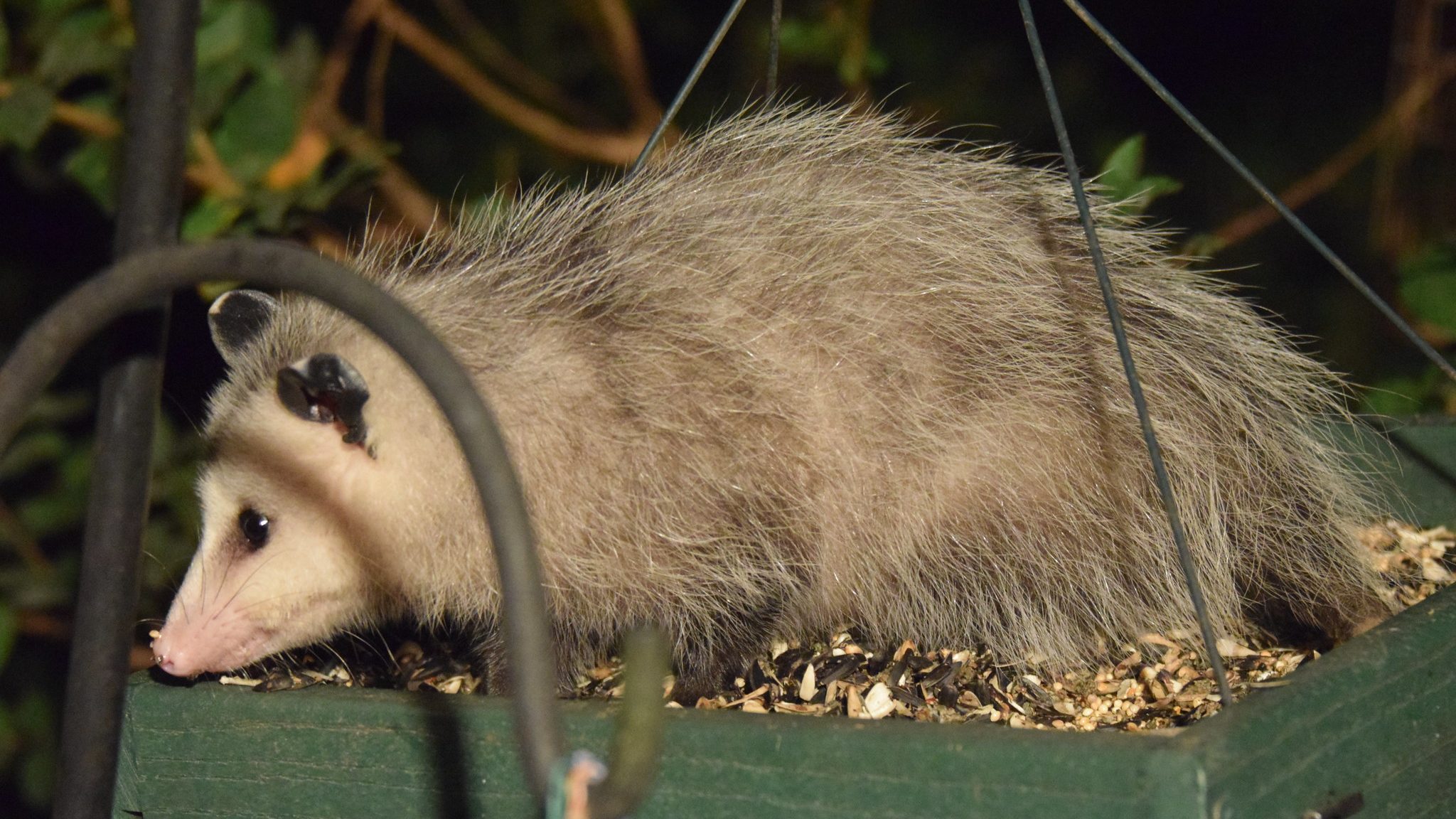
Virginia opossum in the bird feeder © Tony Alter/Flickr The Virginia opossum is a tropical species but during its evolutionary history has gradually moved north. In 1900, opossums ranged in the southeastern United States, but then began a rapid northward expansion. Today they are fairly common in New England and the Upper Midwest, and range into Canada.
Climate change has likely played a role, but as University of Michigan researcher Lisa Walsh notes, the availability of easy food provided by agricultural and suburban areas is also important. Opossums will eat just about anything. Earthworms and insects found in yards, garden plants and garbage create an opossum smorgasbord.
Opossums are generalists, enabling their spread. They can live in trees, den in burrows or even make use of abandoned buildings. Roads pose definite hazards – and unfortunately roadkill is how many of us know the opossum – but they are prolific breeders.
Despite their adaptability, a tropical mammal is not particularly suited for a tough winter…
-
Frostbitten Tails
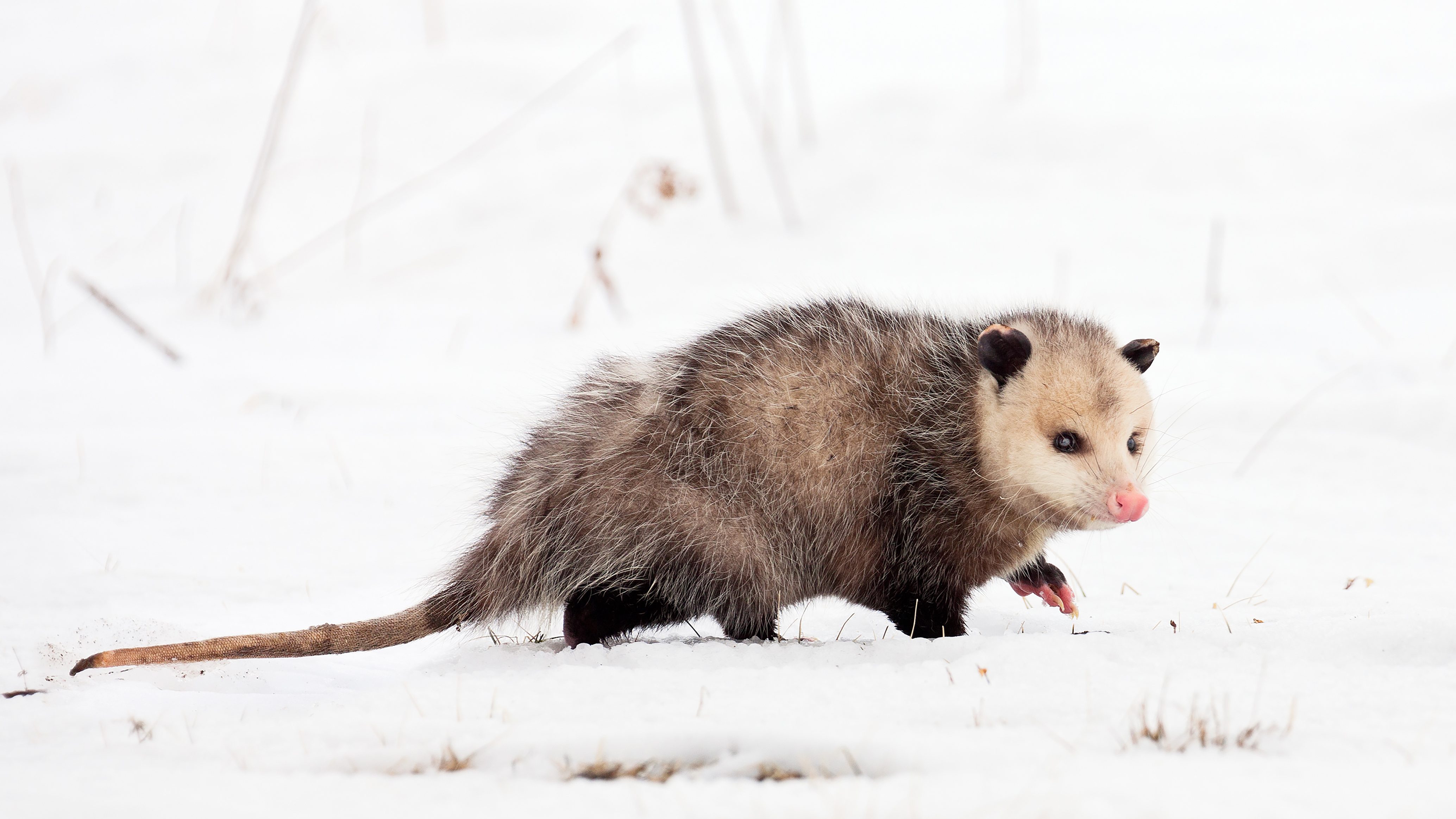
An opossum in winter at TNC’s Nachusa Grasslands Preserve, Illinois. © Dee Hudson/TNC Unlike some other mid-sized mammals that thrive in the presence of humans – think raccoons, red foxes, coyotes – opossums don’t have furry, protective tails. In fact, their tails (and ears) are hairless, making them particularly susceptible to frostbite and even hypothermia.
Many opossums bear physical evidence of surviving harsh winters – damaged ears and tails. Their tails often appear stumpy or as if something had bitten them off, but these are signs that their tails suffered frostbite.
Opossums will den for a few days to escape the cold, but they don’t hibernate. They have to feed periodically. Sometimes they’ll change their nocturnal habits and feed in daylight hours during the winter, to take advantage of warmer temperatures.
When I lived in Pennsylvania, I rarely saw opossums during the day, except on a cold January or February afternoon.
This daytime foraging doesn’t help much during periods of frigid weather. After extended cold periods, you can expect to see a lot of tail-challenged opossums.
-
Life on the West Coast
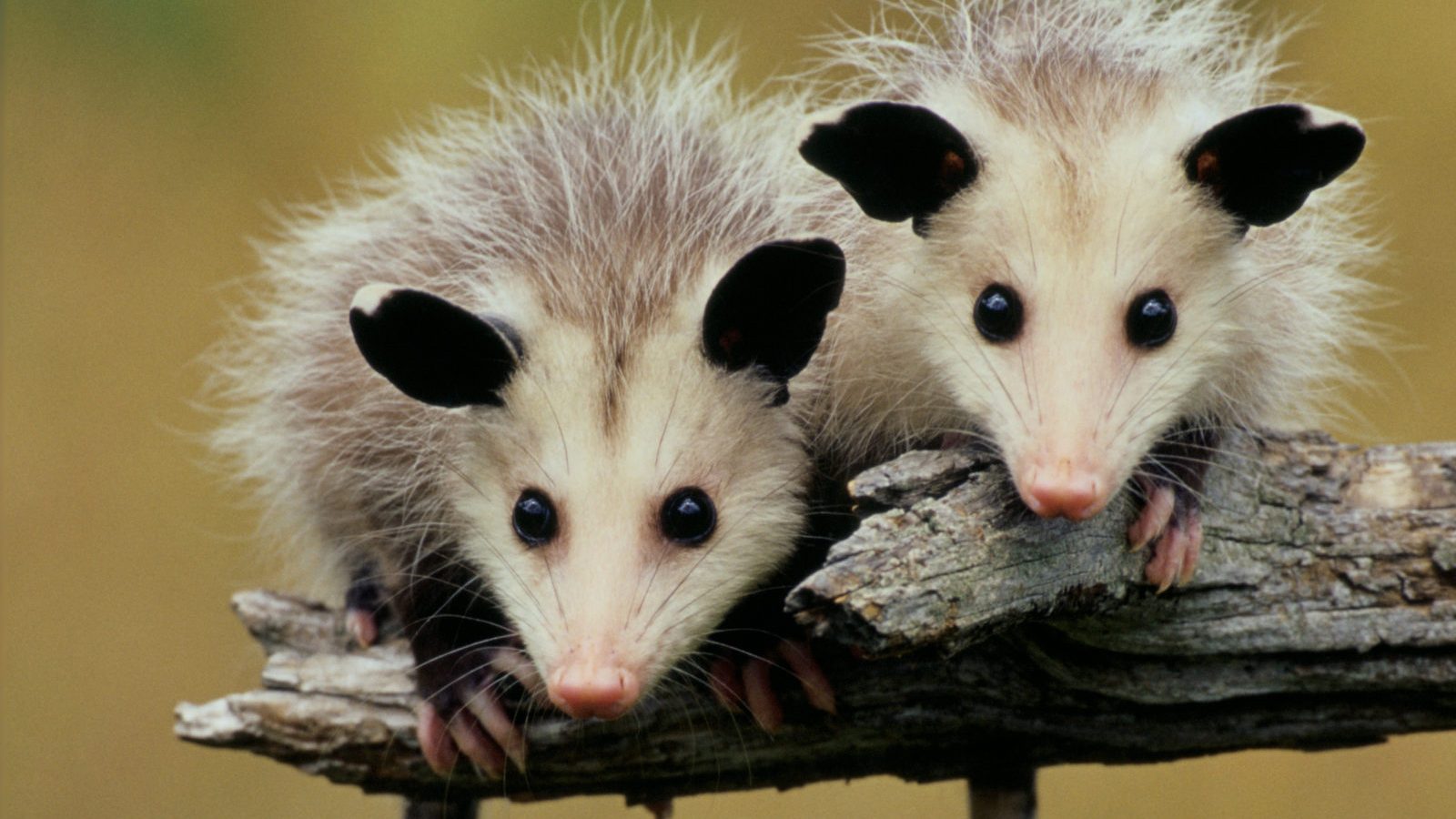
Two baby possums Photo Credit: © Gerald H. Emmerich, Jr. If you look at the opossum’s range map, they now occupy much of the eastern half of the country. There’s a big blank spot in the Great Plains and Rockies, where they are not found. But you will note that opossums are also found all along the West Coast of the United States.
Is this part of their range expansion? Well, yes, but for different reasons than elsewhere. On the West Coast, opossums were introduced on purpose. Some were released in southern California in 1890, for reasons that remain unclear.
Another batch was delivered west a few years later, this time brought along by Southerners relocating to California. In the U.S. South, opossums were a popular hunting quarry and wild food, so the idea was that they were brought to provide a taste of home. Other opossums escaped from a fur farm, and some were believed to be released pets.
Now opossums are firmly established from California to Washington, and most people probably don’t even know they’re non-native. They live in human-altered habitats, and clean up garbage, so as non-native species go, they’re probably more beneficial than harmful.
-
Of Ticks and Snakes
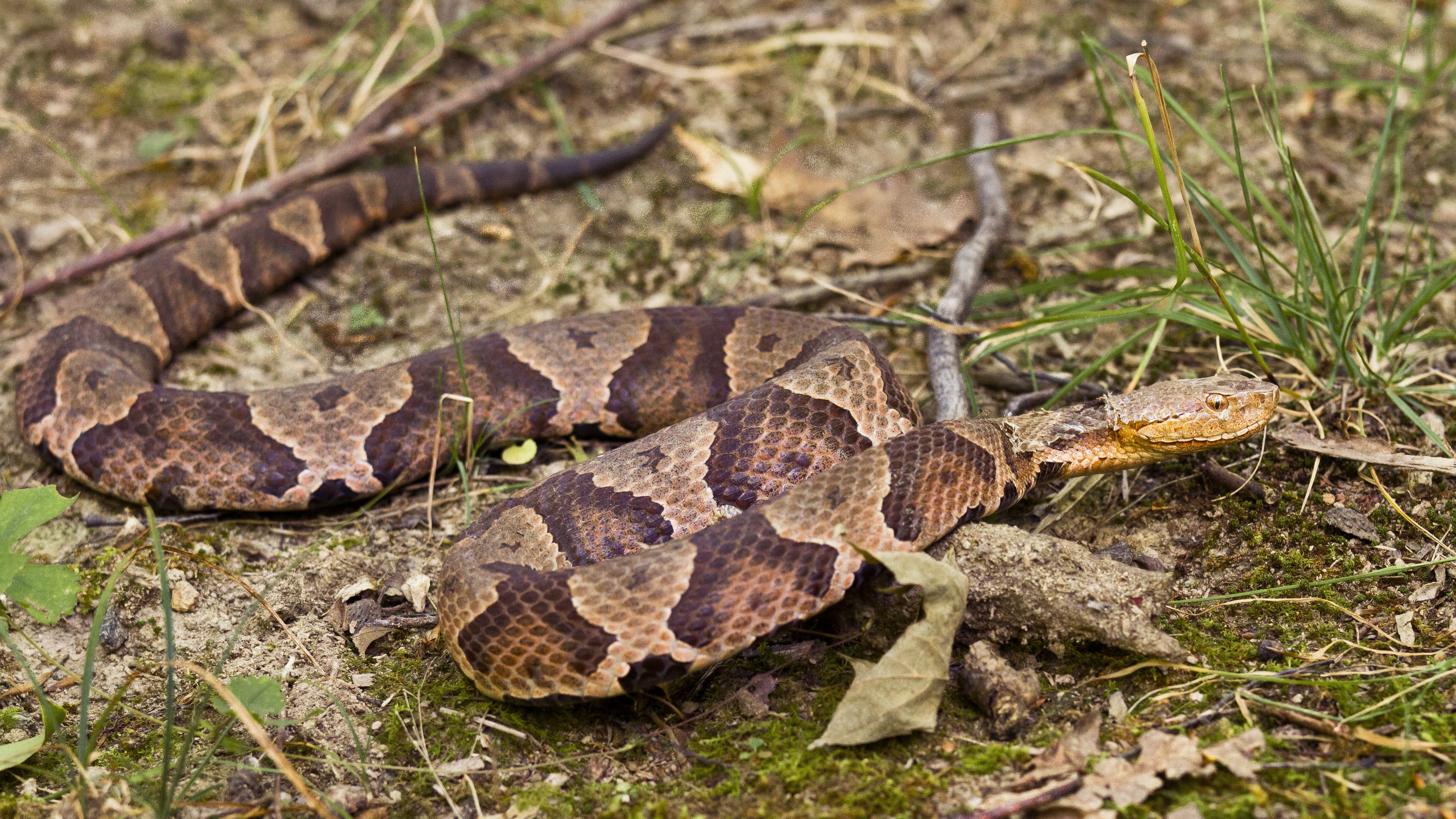
Northern Copperhead in the Appalachian highlands of West Virginia © Kent Mason Perhaps you’ve seen the headlines: Opossums fight Lyme disease! This has become a mainstay of any story about opossums. It’s fascinating to me as a study in science communications. The original study was in a controlled setting, in which dozens of ticks were put in the same cage as opossums. Opossums are fastidious groomers – in fact, they’re practically odorless unless they’re feigning death – so 97 percent of the ticks were cleaned off and consumed.
That’s interesting. It is even more interesting that it is then taken as fact that opossums are important in reducing Lyme disease. I have seen no study that shows more opossums means fewer ticks, or even that opossums feast on huge numbers of ticks in the wild.
I understand the appeal of this idea: It presents a simple and pleasing natural solution (more opossums!) to the complex and horrible problem of Lyme disease. But more research is needed. Almost certainly, solving Lyme disease will be far more complex and will also involve the politically unpalatable idea of reducing the white-tailed deer herd.
So maybe opossums don’t have tick-fighting superpowers. However, they are resistant to most forms of snake venom, including venom from rattlesnakes and copperheads. According to Medical Discovery News, this is because “a protein in their blood binds to the toxins and neutralizes them.”
There are now research efforts to synthesize this protein to make antivenom for humans.
-
Huge Opossums

Your friendly neighborhood opossum © USFWS Opossums are increasingly found even in urban areas, and they’re thriving. Research published in Northeastern Naturalist found that opossums living in urban areas had an average body mass that was 34 percent larger than that of their rural counterparts. The home ranges of city opossums, on the other hand, were smaller.
So if you live in the eastern half of the United States, or the West Coast, there’s a good chance you have an opossum neighbor. Some are alarmed by this very toothy, somewhat unsettling critter. The notorious Toronto mayor Rob Ford once issued dire warnings about the “vicious” opossums. This opinion is just as baseless as the nostril thing.
As city wildlife goes, opossums make good neighbors. They rarely contract rabies. They won’t eat your pets. They will gobble up garbage, including bones and other refuse raccoons won’t touch. They may look and act a bit odd by human standards (but should we really be judging?) but a closer look reveals a fascinating creature. One that goes shuffling along, adapting to our ways and thriving in our midst.




There are lots of opossums in Brooklyn and they can get really big. I had to brake my car one night while one waddled across Ave. D. He was bigger than my Lasa Apso dog.
I was at my Vet’s one day when a Parks Dept. person brought one in that had a big bloody wound. My Vet told me that the Parks Dept had put them in Marine Park in an effort to reduce ticks. So, the NYC Parks Dept. believes opossums like to eat ticks.
Thanks for this article on these weird looking creatures.
Every year, a different possum will dig a nest under the portion of my barn, that has a concrete parking slab. I box trap the critters, and relocate them to the banks of a nearby river, several miles away. Two questions: 1) will these critters attack, as they always open their mouths and assume a very hostile position? 2) Do they leave some kind of musk or something, because the new possums that come each year tend to dig within five feet of last years possum’s digging, even though I put rocks or screening and cover the den.
I’ve always found opossums fascinating, especially their ability to adapt and thrive in both rural and urban environments. I recently came across some interesting beliefs about what it means when you see a possum at night. Different cultures associate it with various signs and meanings – from resilience to messages of transformation. If anyone else is curious, I found this article explaining more about it: Seeing a possum at night meaning
. Would love to hear if anyone has had any unique encounters with possums at night!
what are the enimes
this is sooooooo cool!!! Good job
Excellent article! Not only is it extremely informative, but it’s also very entertaining & well written. We “have” several opossums that visit our front porch almost every night. It all started when I happened to see a baby opossum out of the corner of my eye when I was walking out one night. My wife fell in love with the cute little critter & put some food out for it. Things just grew from there. We’ve had nothing but good experiences with them, so we love our opossums. Sorry to read of other not so pleasant experiences that some of you have had. Ours have been pretty awesome little friends.
Thank you for interesting facts on the opossum. I find them fascinating and feel lucky whenever they show up around my house. The ones living here love bananas and yogurt !
I have a possum living under my gazebo. I call him Skinny Tail. He’s been living on our property for many years. He didn’t bother me until I grew a garden in the backyard. He would eat all of my precious vegetations. I, now, dislike him very much.
A few weeks back I noticed an opossum coming on my porch. It eats the dry cat food I leave out for my ferals. He bolts when I come out on the porch ( the motion light goes on). I live in Brooklyn, N Y. Lol
Unfortunately opossum will eat your beloved poultry. One found a small hole in my fencing that had come loose and ate one of my pet silkies and came back the following night and ate killed another silkie sitting on 8 eggs close to hatching. It removed her head and took it with them. That is how I found the hole. I fixed the hole and sat watching the next night and here came the opossum. I harrassed it until it ran away. This repeated for the next 5 nights. I harassed it each night. This opossum just couldn’t forget it’s yummy chicken dinner. The next day 2 houses down was a dead opossum in the road and my chickens have been safe ever since.
Thank you for the information! We should respect and protect all animals, including this poorly judged opossum .
Thank you for an enlightening and informative article.